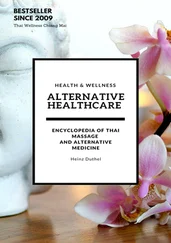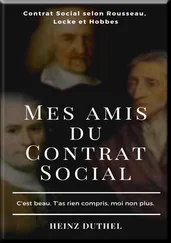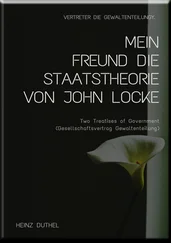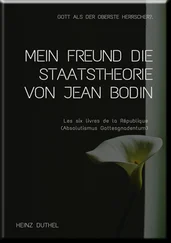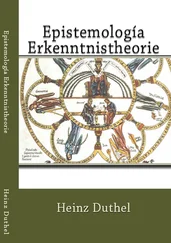Many people find it difficult to sustain their commitment to the Dhamma on their own, without the support of like-minded friends and companions. (It can be hard to stick to the precepts if you're surrounded by people who see no harm in telling lies, or in having a secret romantic affair now and then, or in going out drinking all night.) You may have to do a little patient detective work to find this kind of support (see How can I find other people with whom to study Dhamma and practice meditation?, above).
Having taken these first steps, you can proceed along the Buddhist path in your own way and at your own pace. Although you can learn a great deal about Dhamma on your own, your understanding will grow by leaps and bounds once you find a good teacher — someone whom you trust and respect, who keeps to the precepts, and who understands the Dhamma and can communicate it clearly.4 Other aids to progress in understanding the Dhamma are these: deepening your understanding of the precepts; studying the suttas;5 getting to know monks or nuns (the Sangha) and becoming acquainted with their traditions; developing a keen, discerning ear that can recognize which of today's popular spiritual teachings actually ring true to what the Buddha taught;6 and learning meditation. How you proceed is entirely up to you, but the bottom line is this: learn what the Buddha taught and put it into practice in your life as best you can.
If you ever decide that the Buddha's teachings aren't for you, you are free to walk away at any time and find your own way. There is no ceremony for renouncing the Buddha's teachings. Just remember: your happiness is in your own hands.
I'd like to have a Buddhist wedding. Any suggestions?
In the world of Theravada Buddhism marriage is regarded as a civil contract, not as a spiritual or religious union. Thus there is no standard Buddhist liturgy for marriage. You may simply include whatever texts or passages you and your spouse-to-be find inspiring.
A wedding is an excellent time to formally renew your commitment to both the Triple Gem and the five precepts. In Buddhist countries a couple might pay a visit to the local monastery shortly before or after their wedding to offer food to the monastic community, recite the refuges and precepts in a formal way, receive a little Dhamma instruction, and possibly receive a blessing or two from the monks. If such a visit isn't possible for you, you might put together your own refuges and precepts ceremony (use the formal ceremony as a guide). You might also consider reciting the "Five Subjects for Frequent Recollection," the Maha-mangala Sutta, or any other passages that inspire you.
What were the Buddha's views on divorce?
In Theravada Buddhism divorce (like marriage) is regarded as a civil matter, rather than a religious or spiritual one. I don't know of any suttas in which the Buddha expresses an opinion about divorce. The Buddha did, however, have some suggestions about how a couple should behave while they are married (see DN 31).
For some observations on how divorce is understood in Sri Lanka, see The Position of Women in Buddhism, by Dr. (Mrs.) L.S. Dewaraja. For more about marriage in general, see A Happy Married Life: A Buddhist Perspective, by K. Sri Dhammananda.
What were the Buddha's views on homosexuality?
From what I've read in the suttas, the Buddha gave no indication that one's sexual orientation has any bearing on one's spiritual practice. The five precepts, which form the most basic foundation of a moral life in Buddhism, encourage the abstention from "sexual misconduct," a term that generally refers to sexual activity between two people outside of a long-term committed relationship. It has nothing to do with "orientation."
The Buddha did, however, have strong words to say about sexuality/sensuality in general, as it is one of the most powerful expressions of human craving and attachment. And craving — the second Noble Truth — is a root cause of human suffering. The Buddha was very clear: if you're genuinely concerned about your long-term happiness, then it's worth reassessing the value of engaging in activities — be they heterosexual, homosexual, or non-sexual — that feed your cravings:
Even if it's with pain, you should abandon sensual desires if you aspire to future safety from bondage. Alert, with a mind well-released, touch release now here, now there. An attainer-of-wisdom, having fulfilled the holy life, is said to have gone to the end of the world, gone beyond.
It is worth noting that the Buddha explicitly discouraged his followers — men and women, alike — from dwelling on their sexual identity (AN 7.48). Although in this particular sutta he was describing heterosexuals, the message clearly applies to everyone.
What were the Buddha's views on abortion?
Practicing Buddhists observe the five precepts as a foundation for the moral life that spiritual progress requires. The first of these precepts is to "refrain from destroying living creatures." Because Theravada Buddhism regards human life as beginning at the moment of conception,1 killing a fetus implies killing a human being, making abortion patently incompatible with the first precept.
One indication of the seriousness with which the Buddha regarded abortion is found in the Vinaya, the collection of texts that define the conduct and duties of Buddhist monastics. According to the Vinaya, if a bhikkhu or bhikkhuni should facilitate an abortion, or if a woman should get an abortion based on their recommendation, then that bhikkhu or bhikkhuni is immediately expelled from the Sangha, having broken one of the four cardinal rules of monastic conduct.
How should I teach Buddhism to my children?
The Buddha's advice to parents is straightforward: help your children become generous, virtuous, responsible, skilled, and self-sufficient adults [see DN 31 and Sn 2.4]. Teaching Buddhism to one's children does not mean giving them long lectures about dependent co-arising, or forcing them to memorize the Buddha's lists of the eightfold this, the ten such-and-suches, the seventeen so-and-sos. It simply means giving them the basic skills they'll need in order to find true happiness. The rest will take care of itself.
The single most important lesson parents can convey to their children is that every action has consequences. Each moment presents us with an opportunity, and it is up to us to choose how we want to think, speak, or act. It is these choices that eventually determine our happiness. This is the essence of kamma, the basic law of cause and effect that underlies the Dhamma. It also happens to be the message behind one of the few recorded teachings the Buddha gave to his only child, Rahula.1 This sutta — the Ambalatthikarahulovada Sutta (MN 61) — offers parents some important clues about teaching Dhamma to young children — in terms of both the content of what to teach and the method to use.
In this sutta the Buddha reprimands the seven year old Rahula for telling a small lie. The content of the Buddha's lesson here is clear and simple: it concerns right speech, and helping Rahula keep himself true to the fundamental principles of virtue. There are several noteworthy aspects to the Buddha's method. First, by artfully drawing comparisons to an everyday utensil (in this case, a water dipper), the Buddha makes his point in vivid and age-appropriate language that Rahula can easily understand. Second, the Buddha doesn't launch into a long-winded abstract lecture on the nature of kamma, but instead keeps the lesson focused on the immediate issue at hand: choosing your actions carefully. Third, although the five precepts do indeed constitute the fundamental framework for moral conduct, the Buddha does not mention them here — presumably because some of the precepts (concerning sexuality and using intoxicants) are simply not relevant to most seven year olds. (Perhaps the Buddha had more to say about the precepts by the time Rahula was a teenager.) Fourth, the Buddha keeps Rahula engaged during the lesson by asking him simple questions; this is no dry, soporific lecture. And finally, the Buddha takes advantage of the opportunity presented by this "teaching moment" to expand into deeper territory, to explain to Rahula the importance of reflecting inwardly before, during, and after performing an action of any sort — whether of body, speech, or mind. The Buddha thus places Rahula's original small misdeed into a much broader context, transforming it into a lesson of deep and lasting significance.
Читать дальше



